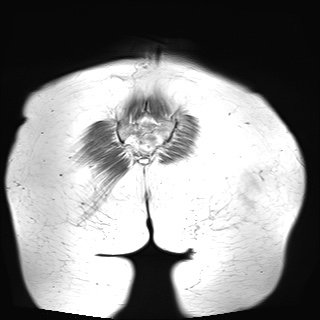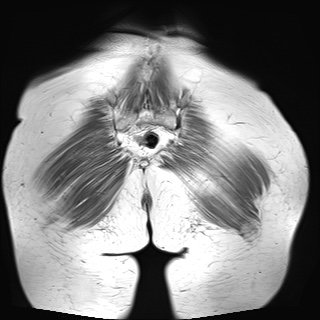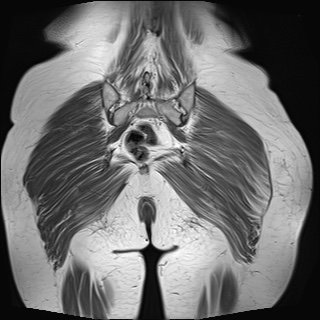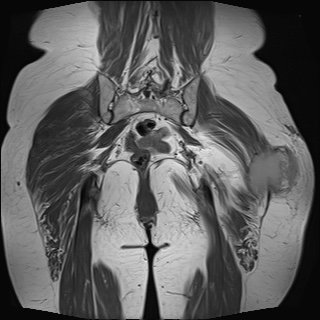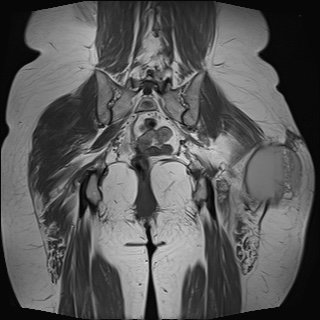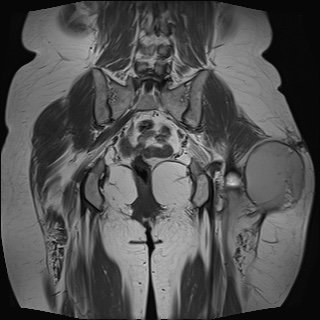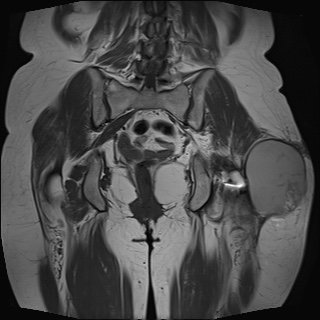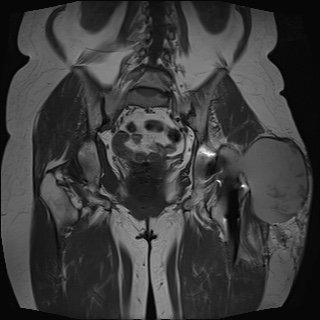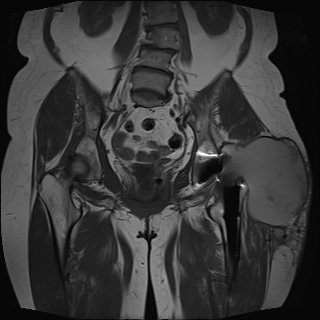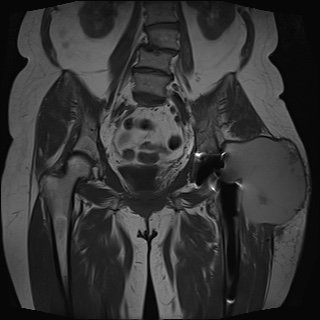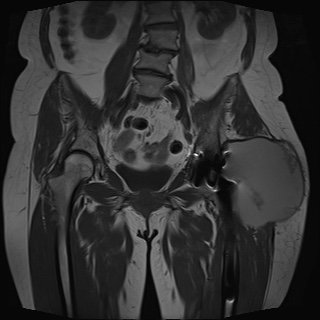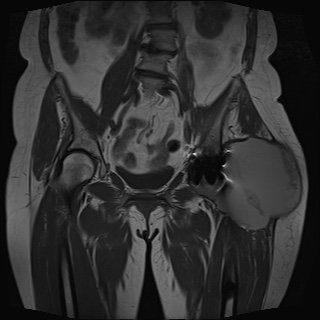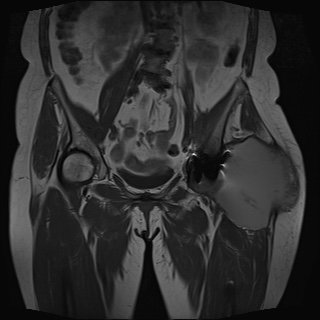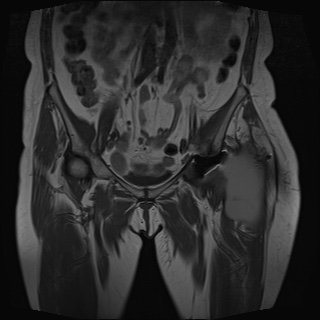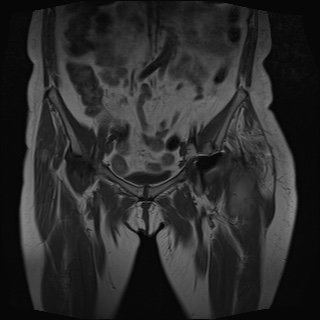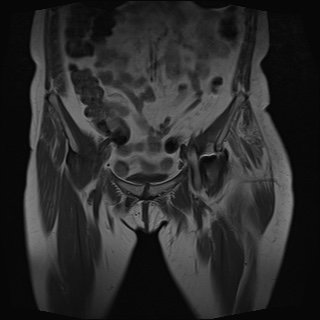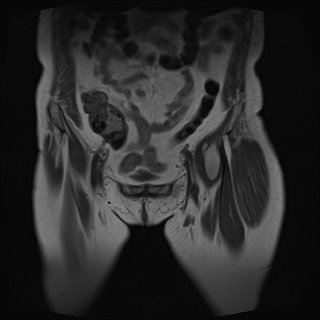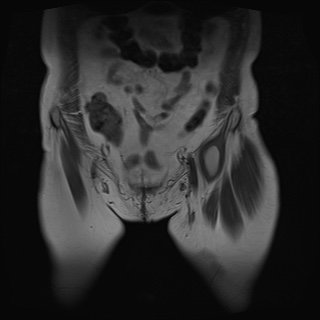CASE 17: Revision surgery for a dislocating hip replacement, using a modular taper fluted stem
The Story
“This 62 year-old female presented as an emergency with a third-time dislocation of her multiply revised left hip replacement. She had been suffering with pain in her left hip replacement.
Previously she had undergone left dynamic hip screw fixation for femoral neck fracture, followed by metal-on-polyethylene total hip replacement after femoral head avascular necrosis and then revision of the bearings to a ceramic on polyethylene hip for ARMD as a result of taper corrosion.
She had a CRP of 6mg/L and an ESR of 8mm/H.”
The Investigation
Pre-operative radiographs explored the current situation.
The Evidence
This is the pre-operative radiograph showing a dislocated left ceramic-on-polyethylene hip replacement.
The MRI shows wasting of her gluteus maximus, medius and minimus. A large pseudotumour is seen lateral to her left hip joint.
The Diagnosis
Adverse response to metal debris from the taper of a metal-on-plastic hip replacement can cause devastating soft tissue destruction with detachment of her left hip abductors from the greater trochanter causing multiple dislocations.
The Operation
This patient underwent excision of her large pseudotumour and a revision procedure in a single stage.
Key operative steps:
Excision of the large pseudotumour
Explant the well-fixed socket and reinsertion of socket with dual mobility bearing
Removal of well-fixed stem with extended trochanteric osteotomy and plate fixation
Modular stem to replace this allowing for leg length and offset adjustment
Repair of damaged muscle
Intraoperative images
The dissection of the dead tissue. An adverse reaction to the metal debris, released at the trunnion interface between the stem and the head of her original meta-on-polyethylene total hip replacement has caused this.
The removed tissue.
The Outcome
This is the post-operative anteroposterior radiograph showing a long revision femoral stem with the head articulating in a dual mobility liner. An extended femoral trochanteric osteotomy was utilised to explant the old femoral stem, which is held with a plate and wires.
The Verdict
“Adverse reactions to metal debris can be caused by both wear particles from metal-on-metal bearings as well as from corrosion, releasing ions, from the stem/head taper.
Post-operatively this patient was walking with a stick and demonstrated good control of her left hip considering the amount of muscle wasting.”




